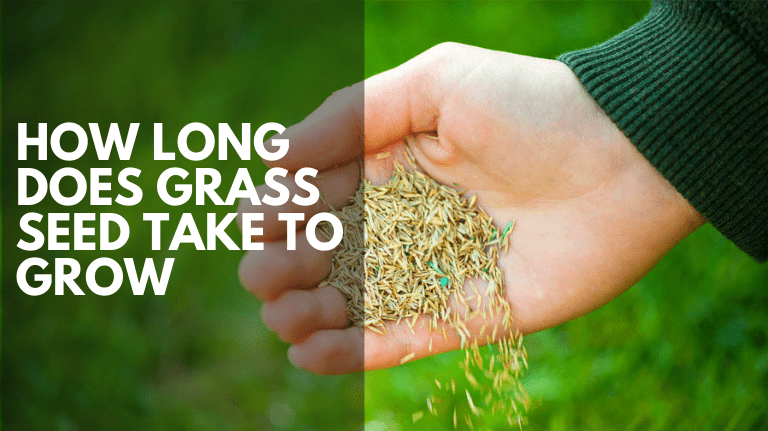Grass Seed Take to Grow is an excellent option for individuals looking to grow a lush, green lawn or revamp their existing one. However, one of the most common questions asked by homeowners is, “How long does grass seed take to grow?” The answer to this question is dependent on several factors, including the type of Grass Seed Take to Grow, climate, soil conditions, and watering. In this article, we will explore everything you need to know about how long it takes for grass seed to grow.
Factors That Affect Grass Seed Germination
Before discussing how long it takes for grass seed to grow, it’s essential to understand the factors that affect seed germination. The following are the most critical factors that influence grass seed germination:
Type of Grass
Different types of grass have varying germination periods. For example, cool-season grasses, such as fescue and Kentucky bluegrass, have a shorter germination period than warm-season grasses like Bermuda grass.
Soil Conditions
Grass Seed Take to Grow needs a fertile soil environment to germinate. Soil with high organic matter and proper pH levels will enhance seed germination.

Climate
The climate plays a significant role in grass seed germination. Warm-season grasses will require more warmth than cool-season grasses. Additionally, the soil temperature must be at least 50°F for grass seed to germinate.
Watering
Watering is a critical component in the germination process of grass seed. Grass seeds must have enough moisture to germinate successfully.
Timing
The best time to plant Grass Seed Take to Grow will depend on the type of grass and the climate. For cool-season grasses, the best time to plant is in the early fall or spring, while for warm-season grasses, it’s best to plant in the late spring or early summer.
Germination Process
Once the grass seed is planted, the germination process begins. The following are the stages involved in grass seed germination:
Stage 1: Imbibition
When water penetrates the grass seed coat, it initiates the germination process. This is the first stage of germination called imbibition. During this stage, the seed takes in water and swells up.
Stage 2: Root Emergence
The second stage of germination is root emergence. The embryo begins to grow and push out a tiny root.
Stage 3: Shoot Emergence
During this stage, the first shoot emerges from the grass seed, and the plant begins to grow above the ground.
Stage 4: Blade Development
Once the first shoot has emerged, the blade begins to develop, and the Grass Seed Take to Grow plant begins to take shape.

How Long Does Grass Seed Take to Grow?
The length of time it takes for grass seed to grow is dependent on various factors. Typically, the germination process takes between 5 to 30 days. However, some grass types can take up to 60 days to germinate.
After the germination process, the grass will continue to grow at a rate of approximately 2/3 inches per week, depending on factors such as climate, soil quality, and watering.
Tips for Growing Grass Seed Successfully
Growing grass seed successfully requires careful consideration and effort. Here are some tips to ensure successful Grass Seed Take to Grow germination:
- Prepare the soil: Before planting grass seed, ensure the soil is properly prepared. Remove debris, rocks, and weeds, and till the soil to a depth of six inches.
- Choose the right grass type: Select the appropriate grass type for your climate, soil conditions, and intended use of the lawn.
- Sow seed correctly: Sow the seed evenly and at the recommended rate. It’s essential to cover the seed with soil or compost, as it needs to be in contact with the soil to germinate.
- Water regularly: Ensure the soil is consistently moist for the first few weeks after planting. Once the grass is established, water deeply and infrequently, allowing the soil to dry out between waterings.
- Fertilize: Apply fertilizer to the grass seed once it reaches a height of two inches. Choose a fertilizer that is appropriate for your grass type and follow the recommended application rate.
Common Mistakes to Avoid
There are several common mistakes that homeowners make when planting grass seed. Avoiding these mistakes will increase the likelihood of successful germination and a healthy lawn. These include:
- Planting at the wrong time: Ensure that you plant grass seed at the appropriate time for your grass type and climate.
- Over or under watering: Overwatering can drown the grass seed, while under watering can cause it to dry out and die.
- Failing to prepare the soil properly: Ensure that the soil is properly prepared before planting grass seed.
- Choosing the wrong grass type: Choosing the wrong grass type for your climate and soil conditions can lead to poor germination and an unhealthy lawn.
Conclusion
In conclusion, the length of time it takes for grass seed to grow is dependent on several factors, including the type of grass, climate, soil conditions, and watering. Typically, the germination process takes between 5 to 30 days, and the grass will continue to grow at a rate of approximately 2/3 inches per week. By following the tips provided in this article, you can increase the likelihood of successful grass seed germination and a healthy, beautiful lawn.
FAQs
How often should I water my grass seed?
Ans: During the germination process, it’s essential to keep the soil consistently moist. Once the grass is established, water deeply and infrequently, allowing the soil to dry out between waterings.
Can I plant grass seed in the summer?
Ans: It’s best to plant grass seed in the early fall or spring for cool-season grasses and in the late spring or early summer for warm-season grasses.
Unlock Full Article
Watch a quick video to get instant access.


Social Media